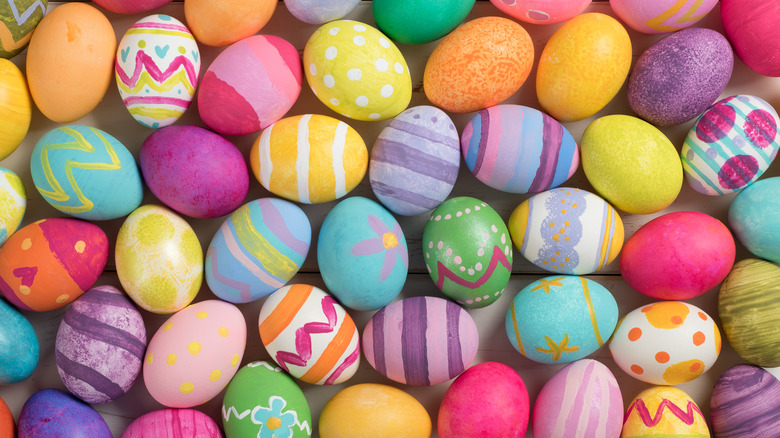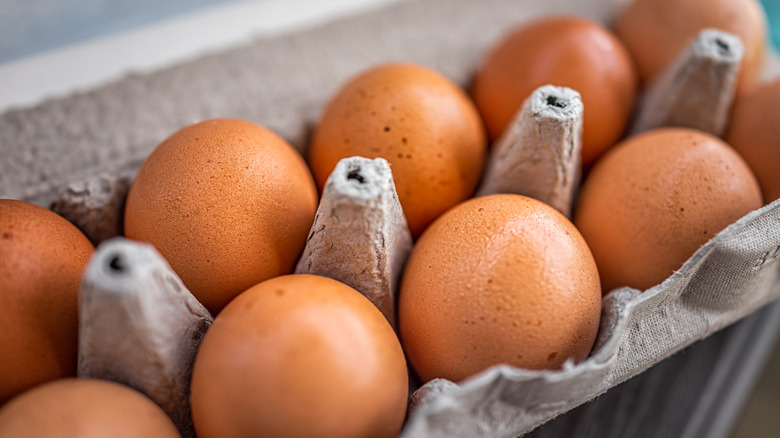Why You Should Use Brown Eggs Instead Of White Ones For Painting This Easter
Dyeing Easter eggs for a bit of springtime décor can be lots of fun — until you realize how long you've spent trying to get any color whatsoever on your eggs. Easter egg dye can be tricky, and even though you follow the directions on your dye package correctly, you may still have difficulty transcending those pale pastel colors and ending up with vibrant Easter eggs.
Thankfully, though, you can banish the ghosts of Easters past, because there's a way to ensure that your Easter eggs end up brighter and more colorful than ever before — without the added time constraint. Surprisingly, this trick has less to do with what you add to your Easter egg dye and more to do with the eggs themselves. When you know how to pick out the best type of eggs for a colorful Easter egg spread, you'll have a fun time dyeing and decorating — and it'll be virtually stress-free.
Why the color of your eggs makes a difference in Easter egg dyeing
It may not just be your egg dye that's working against you. For color that's more likely to stay on your eggs, change up the type of eggs you buy. While white eggs make a great breakfast, they may not be the best egg choice for Easter egg dyeing. Brown eggs' darker color provides a deeper, richer base for the dye to cling to. Although both egg colors can look beautiful decorated and ready for Easter, if you'd like a more vibrant look this year, try working with brown eggs.
Brown eggs do tend to cost a bit more than white eggs, but if you have a little extra cash to spare, stock up on those brown eggs before Easter. Of course, white eggs can hold color as well, but they'll take longer to dye if you want a bolder color palette. So, if you're up against the clock with Easter preparations, opt for their brown counterpart. You'll be able to pull much more color from the brown eggs than you would if you were to use white eggs, so you'll have a veritable kaleidoscope of Easter egg colors to proudly show off this year.
Other ways to make your Easter eggs look more vibrant
If you'd rather not spend extra on brown eggs, no worries. (Egg prices are certainly high right now.) There are plenty of other ways to make your Easter eggs stand out, and many of them are right in your own kitchen.
No matter which color eggs you choose to work with, be sure to add distilled vinegar to the mix when you prepare your dye. For brightly colored eggs, opt for 50% water and 50% vinegar in each cup before you add in the dye. Distilled vinegar works especially well to make Easter eggs look vivid in color — it's a solution of 5% acetic acid in water, and the acid brings the pH balance of the dye low enough that the dye will stick to the egg. Even though the dye is an important part of creating brightly colored eggs, don't increase the amount of vinegar any higher than is suggested. Beyond a certain point, it won't make much difference in the color of your Easter eggs.
If you want to give your eggs a glossy finish, though, put a few small drops of cooking oil on a paper towel, and gently rub it on the egg after the dye has dried so it'll look glossy. Dyeing brown eggs will yield vivid Easter eggs, but choosing a darker egg color is far from the only way to achieve bright, beautiful eggs this year.


